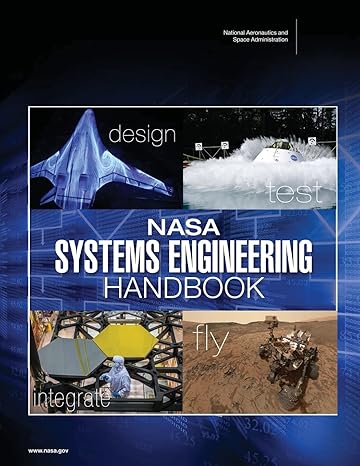Go back


Embracing The Future How Space Organizations Are Integrating Additive Manufacturing Technologies(1st Edition)
Authors:
Roy Sunny

Cover Type:Hardcover
Condition:Used
In Stock
Shipment time
Expected shipping within 2 DaysPopular items with books
Access to 30 Million+ solutions
Free ✝
Ask 50 Questions from expert
AI-Powered Answers
✝ 7 days-trial
Total Price:
$0
List Price: $24.54
Savings: $24.54(100%)
Solution Manual Includes
Access to 30 Million+ solutions
Ask 50 Questions from expert
AI-Powered Answers
24/7 Tutor Help
Detailed solutions for Embracing The Future How Space Organizations Are Integrating Additive Manufacturing Technologies
Price:
$9.99
/month
Book details
ISBN: 8119928458, 978-8119928453
Book publisher: Noya Publishers
Get your hands on the best-selling book Embracing The Future How Space Organizations Are Integrating Additive Manufacturing Technologies 1st Edition for free. Feed your curiosity and let your imagination soar with the best stories coming out to you without hefty price tags. Browse SolutionInn to discover a treasure trove of fiction and non-fiction books where every page leads the reader to an undiscovered world. Start your literary adventure right away and also enjoy free shipping of these complimentary books to your door.
Book Summary: Embracing the Future: How Space Organizations are Integrating Additive Manufacturing Technologies The rapidly evolving technology known as additive manufacturing (AM), or 3D printing, is significantly influencing a number of industries, including the space sector. For the production of spacecraft, satellites, and other space-faring vehicles' components and subsystems, space organizations are progressively adopting additive manufacturing (AM) technology.AM provides space companies with several advantages, such as down costs By doing away with the need for pricey tooling and machining, additive manufacturing (AM) can help down the cost of producing space components.Greater versatility: Additive manufacturing (AM) offers space companies the ability to build complex and customized components that would be difficult or impossible to produce using traditional methods. This flexibility extends to both design and manufacturing.Lighter components: AM can be used to create components that are lighter, which is crucial for space applications where weight is a vital consideration.Strength, stiffness, and durability are examples of components with better performance attributes that can be produced with AM.AM technologies are being integrated by space organizations in a number of ways. For instance, AM is being used by several space organizations to create prototypes of new subsystems and components. They can now test and validate new designs more rapidly and effectively as a result. AM is being used by several space agencies to manufacture spacecraft and satellite production parts.In the upcoming years, there will likely be a major increase in the use of AM in the space sector. AM technologies will become more affordable and able to produce a larger variety of parts and subsystems as they advance and mature. Because of this, AM will become an even more alluring choice for space organizations.The adoption of AM technology is also being fueled by the growing trend of commercial space exploration. The goal of commercial space firms is to find methods to shorten the time and expense of developing and launching new spacecraft. AM can assist them in achieving these objectives.All things considered, the adoption of AM technologies by the space sector represents a noteworthy advancement. AM has the power to completely change how satellites and spacecraft are created and built.
Customers also bought these books
Frequently Bought Together
Top Reviews for Books
Amie Hardy
( 5 )
"Delivery was considerably fast, and the book I received was in a good condition."










